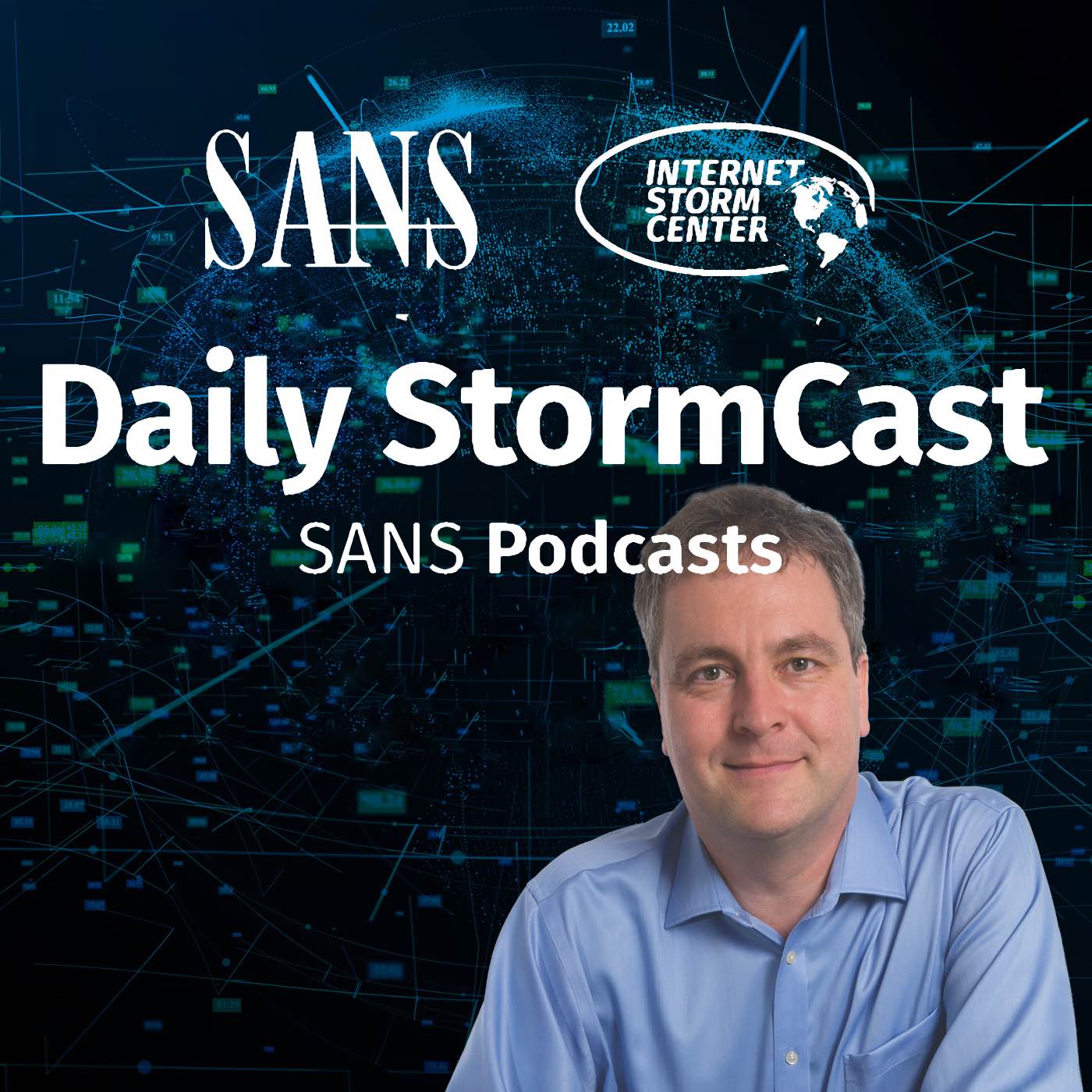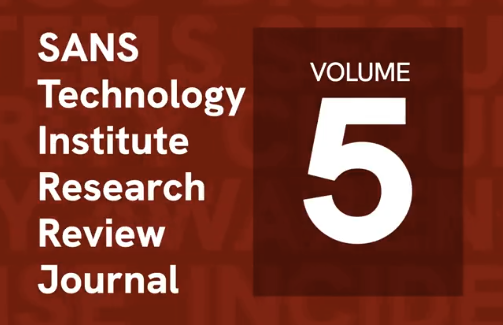Handler on Duty: Johannes Ullrich
Threat Level: green
Podcast Detail
SANS Internet Stormcast Feb 6th 2025: com- prefix domain phishing; Win 10 ESU pricing; Firewall CT Policy; Veeam and Netgear patches
If you are not able to play the podcast using the player below: Use this direct link to the audio file: https://traffic.libsyn.com/securitypodcast/9312.mp3

com- prefix domain phishing; Win 10 ESU pricing; Firefox CT Policy; Veeam and Netgear patches
00:00
My Next Class
| Application Security: Securing Web Apps, APIs, and Microservices | Dallas | Dec 1st - Dec 6th 2025 |
| Network Monitoring and Threat Detection In-Depth | Online | Central European Time | Dec 15th - Dec 20th 2025 |
Phishing via com- prefix domains
Every day, attackers are registering a few hunder domain names starting with com-. These are used in phishing e-mails, like for example "toll fee scams", to create more convincing phishing links.
https://isc.sans.edu/diary/Phishing%20via%20%22com-%22%20prefix%20domains/31654
Microsoft Windows 10 Extended Security Updates
Microsoft released pricing and additional details for the Windows 10 extended security updates. For the first year after official free updates stopped, security updates will be available for $61 for the first year.
https://learn.microsoft.com/en-us/windows/whats-new/extended-security-updates
Mozilla Enforcing Certificate Transparency
Mozilla is following the lead from other browsers, and will require certificates to include a certificate signature timestamp as proof of compliance with certificate transparency requirements.
https://groups.google.com/a/mozilla.org/g/dev-security-policy/c/OagRKpVirsA/m/Q4c89XG-EAAJ
https://wiki.mozilla.org/SecurityEngineering/Certificate_Transparency#Enterprise_Policies
Veeam Update
Veeam's internal backup process may be used to execute arbitrary code by an attacker with a machine in the middle position.
https://www.veeam.com/kb4712
Netgear Unauthenticated RCE
https://kb.netgear.com/000066558/Security-Advisory-for-Unauthenticated-RCE-on-Some-WiFi-Routers-PSV-2023-0039
Discussion
New Discussions closed for all Podcasts older than two(2) weeks
Please send your comments to our Contact Form
| Application Security: Securing Web Apps, APIs, and Microservices | Dallas | Dec 1st - Dec 6th 2025 |
| Network Monitoring and Threat Detection In-Depth | Online | Central European Time | Dec 15th - Dec 20th 2025 |
| Application Security: Securing Web Apps, APIs, and Microservices | Orlando | Mar 29th - Apr 3rd 2026 |
| Network Monitoring and Threat Detection In-Depth | Amsterdam | Apr 20th - Apr 25th 2026 |
| Application Security: Securing Web Apps, APIs, and Microservices | San Diego | May 11th - May 16th 2026 |
| Network Monitoring and Threat Detection In-Depth | Online | Arabian Standard Time | Jun 20th - Jun 25th 2026 |
| Network Monitoring and Threat Detection In-Depth | Riyadh | Jun 20th - Jun 25th 2026 |
| Application Security: Securing Web Apps, APIs, and Microservices | Washington | Jul 13th - Jul 18th 2026 |
Podcast Transcript
Hello and welcome to the Thursday, February 6th, 2025 edition of the SANS Internet Storm Center's Stormcast. My name is Johannes Ullrich and today I'm recording from Jacksonville, Florida. Well, today I wrote up some of these toll-smishing attacks. You probably got a few of them yourself over the last year or so. The setup is always the same. You're receiving a smishing message telling you that you're overdue in paying the tolls, the highway tolls for your car. And it offers you a link to who then pay the tolls. Now, the attackers here are pretty good in sort of customizing these messages somewhat. For example, myself living in Florida, I am usually receiving messages on my Florida phone number that refer to SunPass, the Florida toll system. The domains being used here often use SunPass as part of the host name. So a typical host name would be sunpass.com, then a dash, followed by some random characters. And that's something that you may be able to use to detect users in your network that may have fallen for one of these scams. Take a look if there are any DNS lookups or HTTP requests for anything where the domain name starts with com-. We do see about 100 to 500 of these domains being registered daily. I don't think block lists are that effective because these domains are very ephemeral. They use them only for a very short time. But in hindsight, it may help users if you identify anybody who may have clicked on one of those links. Very importantly, with these links, they usually tell you to reply to the message with a Y. This is in order to make it more difficult for phone companies to identify these messages. That way, the message looks more organic in the sense that there is traffic going forth and back to the number. In my case, and that's very typical for some of the messages I've seen, the number was actually a Philippine number, which makes it pretty obvious that it's bad. But on a mobile device, where it's often not that visible, it's somewhat easy for a victim to fall for these scams if they use tolls a lot and maybe expect a message like this. Always remember that for most recipients, these messages don't work. But there are always a couple people who are just essentially being caught in a bad moment and are then clicking and falling for these scams. On the little postscript here, I also saw some that used tax dash for tax scams. So that's definitely used as well. Maybe not quite as common right now as the toll messages. But, well, maybe we'll see more of that shortly as we approach the tax filing deadline here in the U.S. And we all know Windows 10 will soon no longer receive any security updates. Well, in case you try to keep Windows 10 machines alive, Microsoft now published some pricing for its extended security updates. Year one will cost you $61 per machine. So maybe that's an incentive to upgrade to Windows 11. But as always, Windows systems with older versions tend to keep hanging around. We've seen this with Windows XP, certainly Windows 7 somewhat, hopefully a little bit less with Windows 10. And in the future, of course, that's an issue that will continue to come back. So better take notes and make sure you know what versions of Windows you need to keep alive and on what systems you may need to keep them alive. Well, in TLS is one of those protocols that keeps on giving in the form of many, many subtle updates that keep happening. Latest example is that Mozilla announced Firefox will now enforce certificate transparency. Certificate transparency are logs maintained by certificate authorities. They're mandatory. They're mandatory. And in the certificate, you should have a signed certificate timestamp, typically from at least two different transparency logs that contain a record for your certificate. If these SCTs, these signed certificate timestamps are not in your certificate, then Firefox will no longer trust the certificate. I believe actually Google Chrome and Safari have already been doing some form of this. In some cases, it may depend on how long the certificate is valid for. And for longer valid certificates, you may need more timestamps. The big issue here are internal certificate authorities, which often don't have certificate transparency logs. By default, this policy is enforced for internal certificate authorities, but you may disable that using an enterprise policy. So keep that in mind if you all for a sudden get complaints from users that they get bad certificate messages. And we've got a couple of updates to talk about. First of all, Veeam, the backup solution. Well, a common participant here in the show. You may call him a friend of the show. The critical vulnerability being addressed in Veeam is a problem with their internal updater. It doesn't verify the software properly. So there's a machine in the middle attack here that would allow an unauthenticated attacker to execute arbitrary code, essentially by inserting a malicious backup. And then we also have an update from Netgear for its Nighthawk Pro gaming router. Again, arbitrary code execution is possible here. Did I mention this week already that it's a good idea to have sort of a monthly reminder in your calendar to tell you to double check if your router firmware is up to date? Well, and that's it for today. So thanks for listening and thanks for all the feedback I'm getting. Thanks for the recommendation as always. If you have a second, please click the five stars in your podcast app, subscribe, or even better, leave a quick positive review. Thanks and talk to you again tomorrow. Bye.










